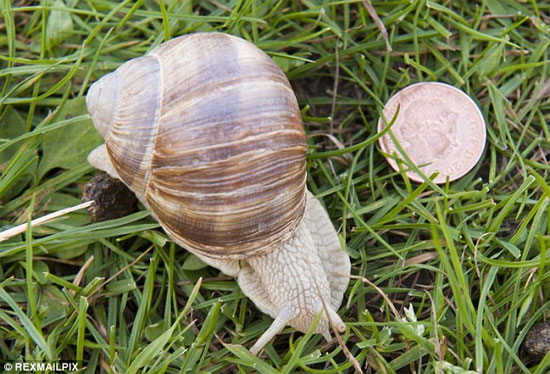The amazing 'eavesdrop' system of trees
Unable to run can not hide, trees detect danger and fight enemies by 'eavesdrop' on predators.
A study showed that some plants have the ability to apply a strategy to start defense mode as soon as they feel the direction of an approaching attack. Not only that, the greater the threat, the stronger their reaction.
This evidence was drawn by researchers after the study focused on mustard trees . These plants will make them less appealing to the taste if there are signs that snails appear in that area. The defense mechanism was deployed even before the predator could attack the first mustard in the garden.

Snails are favorite predators of mustard trees
The University of Wisconsin-Madison American researchers say this shows that trees have 'tapped' their predators and used that information to prevent them from becoming prey.
Professor of zoology John Orrock said: 'One of the things that makes plants so ecologically interesting is that they can't run anywhere else. Being unable to run cannot hide . so some make them less delicious. '
Earlier studies have shown that trees can 'tell' each other about the presence of other hungry caterpillars, snails and carnivores. For example, if a cabbage tree is attacked, it will send chemical messages to nearby plants to turn on the defense mechanism. Meanwhile, the new study shows that this defense can be turned on even when no trees have been attacked.
Orrock said: 'Not only eavesdropping on enemies, these mustard trees also eavesdrop in a very sophisticated way . ' The more alert you get, the stronger the defense system is. Orrock is currently trying to determine whether related vegetables such as cabbage, broccoli and Brussels sprouts have this "eavesdropping" mechanism.
- What is the SS7 system and why can it be used to eavesdrop on iPhone by Donald Trump?
- All mobile calls can be tapped
- Miraculous plants know
- Alarming the decline of old trees
- What do you know about the value of a 50 year old green tree?
- 10 dangerous poisonous species on the tourist road
- Admire the 16 most magnificent ancient trees in the world
- Yellow 'grows' on the tree
- After watching this video, you will see how amazing our immune system is
- Ancient trees absorb more CO2 than young trees
- A 3,000 year old olive tree still bears fruit
- America will recreate giant giant trees
 Why do potatoes have eyes?
Why do potatoes have eyes? 'Tragedy' the world's largest carnivorous life: Death becomes ... public toilet
'Tragedy' the world's largest carnivorous life: Death becomes ... public toilet Tomatoes were once considered 'poisonous' for 200 years
Tomatoes were once considered 'poisonous' for 200 years Detecting microscopic parasites on human face
Detecting microscopic parasites on human face